Today we visit the Orphegels, or learn why it’s a lot easier to cram several puns together in Japanese.
EDIT: Those Spells and Traps that didn’t seem to have musical references? Turns out they did!
Not unlike the Trickstars from the last Etymology article, the theme taking the spotlight this time around has both a musical motif and a sinister vibe – in fact, I’d say it’s both more musical and more sinister. Say hello to the Orphegels!
A very new theme making its appearance in the recently released Soul Fusion, the Orphegel deck centers around two groups of DARK Machine monsters: a low-level group of Main Deck monsters that can banish themselves from the GY to summon other Orphegels from the hand, Deck, or GY, and a group of Link Monsters who can return banished Machines to your Deck to trigger various effects. Their Spells and Traps accelerate this strategy by banishing or sending other Orphegels to your GY, but most important is their Field Spell, which allows the activation of Orphegel monster effects on either player’s turn.
Additionally, Orphegel is the theme containing the newest chapter in the ongoing World Legacy saga – and this is relevant to the name’s etymology, so I’ll attempt to explain it as quickly as possible. Ib the World Chalice Priestess, after her transformation into Knightmare Corruptor Iblee, committed suicide in a moment of lucidity to break free from the control of Lee the World Chalice Fairy. Wracked with grief by his little sister’s death, Ningirsu the World Chalice Warrior took Ib’s body and used it to create a replica. Whether or not the other Orphegels existed prior to this point is unclear, but the end result is that Ningirsu fights alongside them, presumably in defense of his “reborn” little sister.
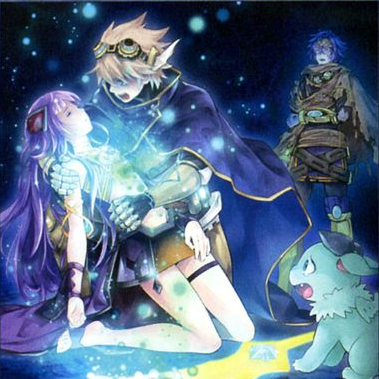
Uplifting!
But, as I mentioned, relevant to the name. So let’s start with that!
Orphegel (オルフェゴール, “orufegooru”) appears to be a combination of three words. The first is Orpheus (オルフェウス, “orufeusu”), as in the man of Greek legend, most commonly known for the story in which he enters the land of the dead to bring back his wife Eurydice (and fails). As you may have guessed, this echoes Ningirsu’s attempt to bring back his dead sister (and possibly his “failure”), though I don’t think there’s meant to be any unfortunate implications despite Orpheus’s dead beloved woman being his wife. Mostly just the “dead beloved woman” part here.
The second reference here is to Belphegor (ベルフェゴール, “berufegooru”), a demon in Judeo-Christian legend known as one of the seven princes of hell associated with the deadly sin of sloth. More noteworthy here is his apparent tendency to lure humans into laziness by giving them the knowledge to construct amazing inventions. While the “sloth” aspect isn’t very noticeable, the “demonic mechanical invention” flavor in Orphegel very much suggests the reference is intentional.
The final reference is to a music box, known in Japanese as “orugooru” (オルゴール); this is a loanword from the Dutch word “orgel”, meaning “organ”. (The same word also exists in German.) The difference in sound may result from a possible phoneticization of the unstressed “e” from the Dutch word into an “o” sound in the Japanese. In addition to the very apparent instrument motif in the Orphegel monsters, there is also a small music box in each of them if you look closely.
Now, while it’s pretty cool that somebody managed to come up with a theme name that pretty seamlessly integrates several different references, it’s…a little harder to do in English. This is mostly because of some L/R trouble between the three component words, as well as the difference in pronunciation and spelling for “orgel”. Breaking it down looks like this:
Orufe(usu) + (Be)rufegooru + Orugooru = Orufegooru
But in English (and Dutch, I guess), it turns into this:
Orphe(us) + (Be)lphegor + Orgel = …Orlphegoerl…?
Which sounds more like some obscure jargon Goofy might utter in Kingdom Hearts…and that’s why we’re going with Orphegel for now. It’s certainly not perfect, though.
Now, if you thought this was enough of a struggle, I’m sure you’ll just be beside yourself with joy at…
MONSTERS
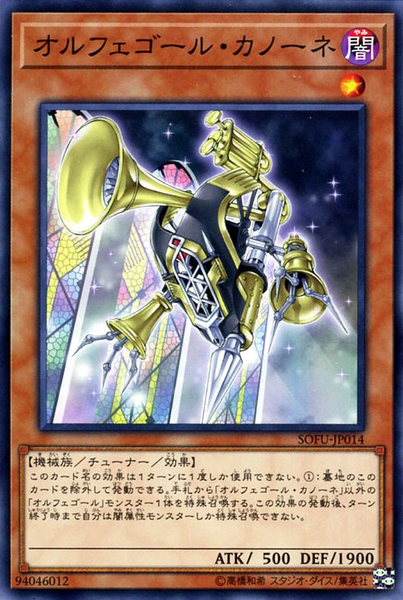 Orphegel Canon Cannon
Orphegel Canon Cannon
Much like their theme name, many of the Orphegel monsters shove multiple words into their names in ways that aren’t easy to pun when brought into English, which is why our current names have unpacked their wordplay instead.
Canon Cannon’s Japanese name is “Kanoone” (カノーネ), which appears to be a pun on the Italian words for “cannon” and “canon” (as in the musical piece): “cannone” and “canone”.
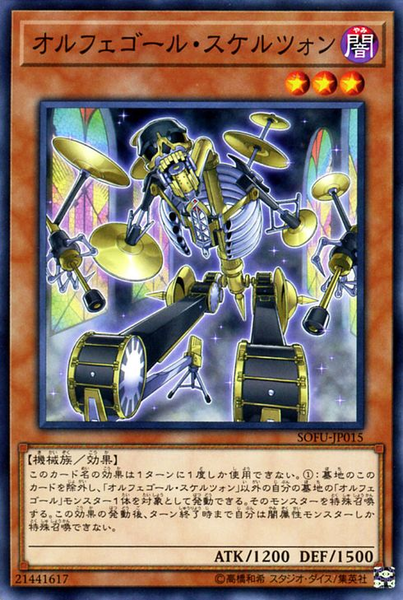 Orphegel Scherzo Skeleton
Orphegel Scherzo Skeleton
Here, “scherzo” (スケルツォ, “sukerutso”) and “skeleton” (スケルトン, “sukeruton”) combine into “Sukerutson” (スケルツォン) quite easily in Japanese. Unfortunately, despite sharing similar sounds in English, the differing spellings used for those sounds again leads to a bit of a mess when actually combined.
Incidentally, a scherzo is a smaller musical composition, usually of a light and playful manner.
 Orphegel Divertimento Devil
Orphegel Divertimento Devil
Again taking advantage of the lack of L/R distinction, “Diveru” (ディヴェル) is meant to evoke a vowel-swapped “devil” while also being part of “divertimento” (ディヴェルティメント, “diverutimento”), here referring to a lighthearted musical genre.
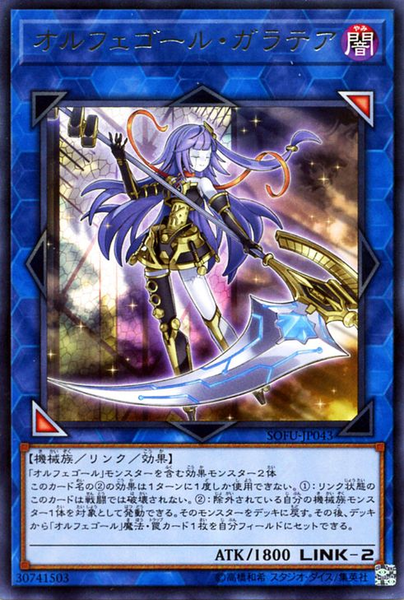 Orphegel Galatea
Orphegel Galatea
Thankfully, it seems the Link Monsters aren’t quite as untranslatable! “Galatea” is a Greek name for “one with skin as white as milk”, but is most famously known from the myth of Pygmalion, a man who created and subsequently fell in love with the ivory statue of a woman he had sculpted. By the blessing of Aphrodite, the statue became a woman – the aforementioned Galatea – and Pygmalion’s bride.
The Orphegel version is (hopefully) not a bride, but is still very much an artificial version of a woman hoped to be made “real”. And she does have rather pale, uh, “skin”.
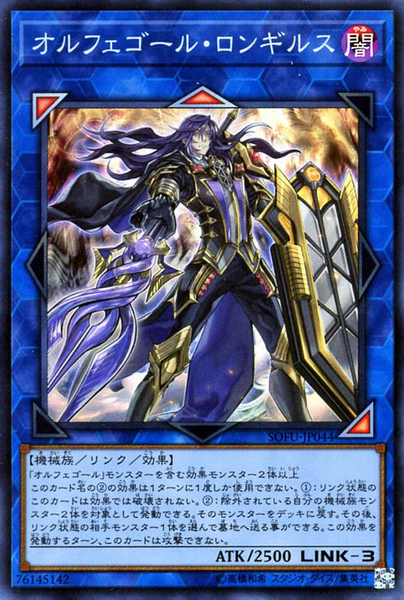 Orphegel Longirsu
Orphegel Longirsu
A rather simple pun here, and one that works in English as well. Longirsu (ロンギルス, “rongirusu”) is both a single syllable away from Ningirsu (ニンギルス, “ningirusu”), the former World Chalice Warrior, and Longinus (ロンギヌス, “ronginusu”), the name given to the soldier who pierced Jesus’ side with a lance once crucified (though often used to refer to his spear, in a sort of Frankenstein’s Monster situation).
Depending on how deep you want to read into it, it may be meant to play into the whole “important person is dead” thing going on with Orphegel, or perhaps it’s a reference to the World Spear (which is a homophone for “holy spear” in Japanese), in which case it may have more of an evil vibe to it, what with the bad juju these World Legacies seem to have going on. Keep an eye on Ningirsu, though. We’ll get back to him in a bit.
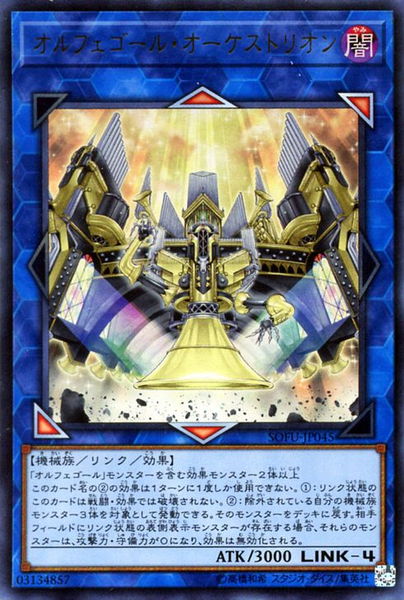 Orphegel Orchestrion
Orphegel Orchestrion
I can’t believe it’s not wordplay! Probably. An orchestrion is a machine and/or instrument that is meant to replicate the sounds of a full orchestra. I doubt the things deserve a bad rap in real life, but in a theme where music = evil and the overarching motif is of “transgression” in the form of machines attempting to replicate originals, I’d say an orchestrion is a pretty good pick for a big boss monster.
SPELLS AND TRAPS
Compared to the mashup madness that is the monster names for this theme, the Orphegel Spells and Traps are decidedly lighter in fare. That’s not to say there aren’t a few nuggets of etymological fun hiding in the this lineup, though…
 Orphegel Babel
Orphegel Babel
Okay, so there’s not a whole lot going on with the name per se. Babel is a reference to the Tower of Babel. However, what does have a lot going on here is the name of the builder: Nimrod. (Yes, this is the source of the insult “nimrod” today, though the popularization of the term was actually using as an ironic term of praise.)
In Judeo-Christian legend, Nimrod was a warrior-king, and the leader of the people who would go on to build the Tower of Babel (see, there is some connection!). Other myths state that Nimrod established idol worship, and certain Jewish and Islamic traditions specifically state his conflict with Abraham.
From the same writings that spoke of Nimrod’s idol worship comes one other interesting anecdote: a dream of his, in which he saw “a piece of black cloth and a crown in the sky”, and demanded his own.
One other point of note: Nimrod is thought to have been a mix of several different Mesopotamian figures, both historical and legendary. One of those figures is the god Ninurta, also known as…Ningirsu.
So, just to make this clear, Ningirsu:
– built the Tower of Babel
– established idol worship
– had a conflict with Abraham
– had a vision of a black cloth and a crown in the sky (check those Palladions out!)
If this is all intentional reference, it’s pretty impressive how far ahead they planned to weave these elements into the story!
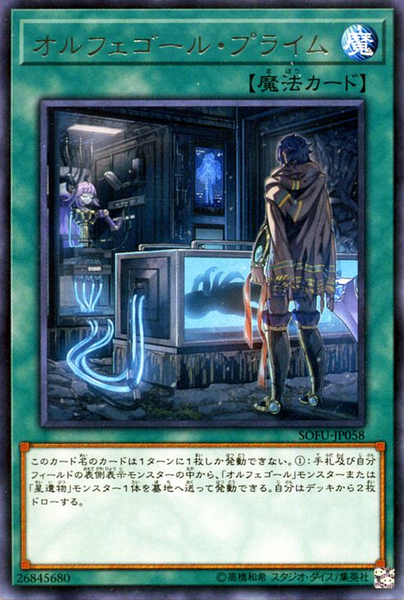
Orphegel Prime
“What do you mean, there’s wordplay in this? It’s obviously just referring to the creation of Galatea as the first Orphegel.”
Well, you’re right. But that doesn’t mean that’s all there is here. Remember how part of the Orphegel name is a reference to Belphegor? As it turns out, there’s a number known as Belphegor’s Prime (1,000,000,000,000,066,600,000,000,000,001), a palindromic prime number that also happens to be 666 with 13 zeroes flanking it on either side. How very spooky. While the number itself doesn’t seem to be a reference here, its nickname certainly does.
EDIT: There is also a musical reference here: a prime is the first tone or note in a scale.
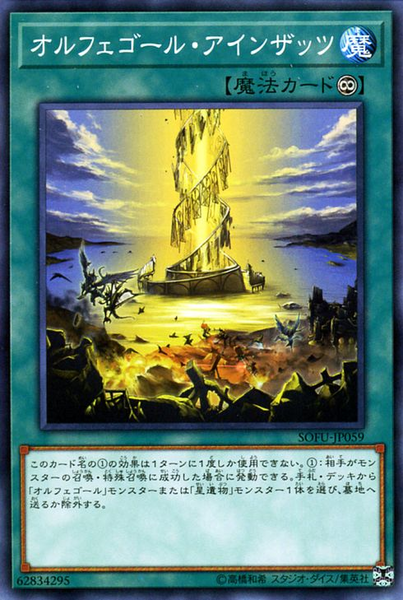 Orphegel Einsatz
Orphegel Einsatz
Interestingly the only German term here aside from Orgel, “einsatz” means “entry” or “entrance” when used in a musical context. Outside of this context, it can also mean “use”, “effort”, and “mission”, among others.
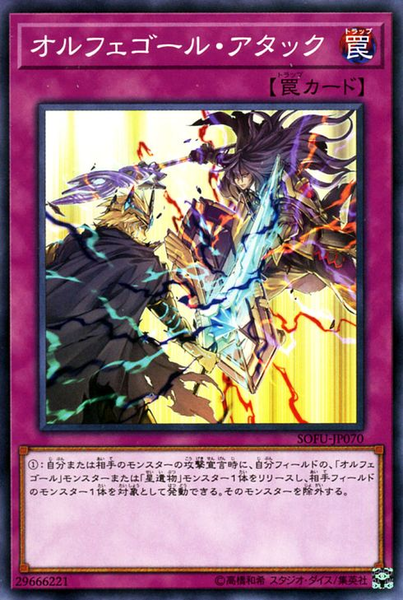 Orphegel Attack
Orphegel Attack
As a matter of fact, the seemingly simple Trap Cards may also be musical references – just not as apparent at first glance. In this case, it’s a nod to the musical term “attack”, which can mean either the strength and speed of how a note is played, or the initial part of a sound.
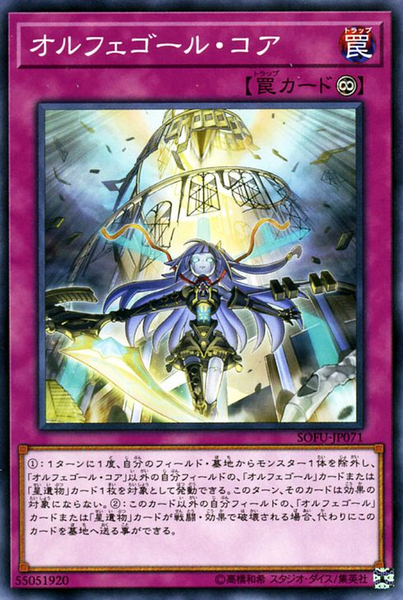 Orphegel Core
Orphegel Core
This last one might be a bit of a reach, admittedly, but it’s possibly a reference to the suffix -core to denote genres of music, specifically types of techno, such as hardcore, breakcore, speedcore, and its ilk.
As the World Legacy series has gone on, it has reached into an increasingly deep (and hard to translate) reference pool for its names, and Orphegel is no exception. I only hope that checking this article out has given you a little more appreciation for what has gone into some of these card names, especially as it can be hard to glean the background info from our translated names alone. And don’t forget to keep your eyes peeled for whatever the World Legacy story brings us next! I’m sure the madmen behind it will bring us some new clever obscure thing I’ll have to write an article on to fully explain.
Until next time, play on, and don’t bring your sister back from the dead!
Header image sourced from Youtube. All others sourced from Yugipedia.

